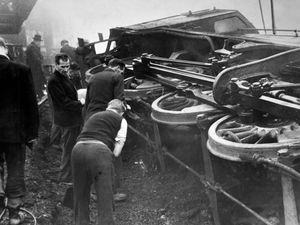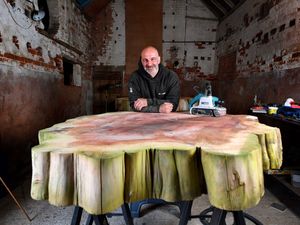Spitfire down: Cruel double blow for would-be bride who lost two fiances during war
"Lester killed." A stark and simple diary entry for Friday, October 23, 1942, recorded the heartbreak of his fiancee, Joan Welch.
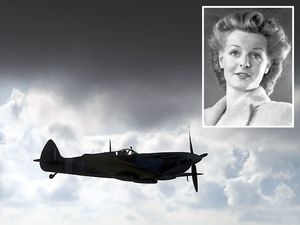
Spitfire pilot Lester Sanders, who was 23, had survived many months in the frontline air war only to die when his aircraft broke up in mid air over Cannock Chase on a routine test flight.
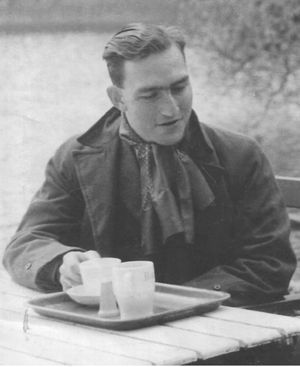
This was war, and it was a tragedy of a sort to be experienced by many a would-be wartime bride. But for Joan, who lived in Hales, near Market Drayton, there was to be a repeat of the anguish and bereavement. For she went on to become engaged to another Spitfire pilot – and he too would not survive the war.
"They say that lightning never strikes twice, but sadly in this case it did," says military historian and author Dilip Sarkar, who tells the story as part of his latest book, Spitfire Down, about the fighter boys who failed to return.
Joan, who died as recently as January 2021 at the age of 100, kept her wartime letters and memorabilia, and they were cherished and preserved by her son Mark Eaton.
Dilip said: "After Joan's death in 2021 Mark contacted me and donated his late mother's letters, and so on, for preservation in my archive and in the hope that I may write up the tragic tale – which I did.
"The letters have also been of help to my great friend, the novelist Valerie Mendes, mother of film director Sir Sam, who is currently working on a wartime RAF-related novel.
"The amazing thing is that had Joan not preserved these letters, the link between her and these casualties would have gone unrecorded and been lost to history."
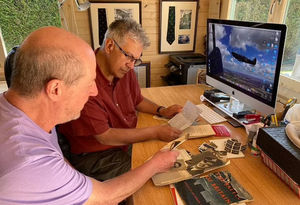
Headmaster's daughter Joan was born on April 23, 1920.
"Joan grew into a beautiful young woman, and living close to RAF Tern Hill, which throughout the war accommodated both operational fighter squadrons and service flying training schools, she consequently became acquainted with several fighter pilots," said Dilip.
However the exact circumstances in which she got to know Lester Sanders, known to his friends as Sandy, seem to be unclear.
He was from Westcliff-on-Sea, Southend, and was a bank clerk before the war. When the balloon went up he joined the RAF, and after training was posted to 222 "Natal" Squadron, flying Spitfires, initially from RAF Coltishall in Norfolk, and taking part in many operations and patrols during 1941 and 1942.
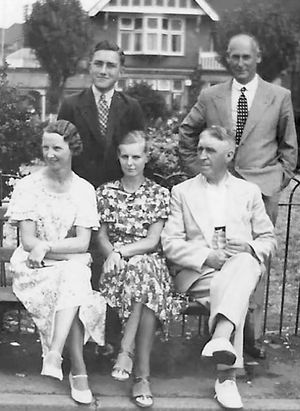
Flight Lieutenant Sanders made his first combat claim, of an Me 109 shot down near Dunkirk, on March 8, 1942 – he was credited with a "probable."
In April 1942 he was posted to 603 "City of Edinburgh" Squadron taking part in the defence of besieged Malta and was immediately in the fray. In one engagement he had to ditch his shot-up Spitfire, the wreckage of which was destined to be brought to the surface in 1973 and is now at Malta's National War Museum.
Sandy returned to England and became a test pilot at the Castle Bromwich aircraft factory in Birmingham, and would write regularly to Joan, to whom he had become engaged, from the test pilots' office.
On October 23, 1942, he took off to give a Spitfire its production test flight, and concern grew when he failed to return. Then came news that the aircraft had broken up over Cannock Chase. The plane came down at Mill Hill, and Sandy's body was found among the scattered debris, his parachute and harness intact and unused.
The inquest verdict was accidental death.
His boss Alex Henshaw wrote: "His youthful enthusiastic zest for life (was) a tonic to all in those dark days of war, and his meticulous attention to detail in his work an example which did much to set the standard for others subordinate to him."
Sandy was posthumously awarded a Distinguished Flying Cross for his exploits in Malta.
For Joan Welch, life had to go on. Another Spitfire pilot friend, Flying Officer Rudi Burgwal, who was Dutch, was shot down and killed in August 1944. But it was not over. She became engaged a second time, to Pilot Officer Ian Smith.
"It is believed that Joan met Ian, whose father was a retired RAF officer and pilot, while training at Tern Hill, upon return from his initial flying training in Rhodesia," says Dilip.
Ian was posted to RAF Petah Tiqva in Palestine for operational training and conversion to Spitfires and was on a routine training flight when, on February 22, 1945, his Spitfire crashed out of control, killing him instantly.

"Joan Welch's tragic experience really emphasises how, at a time when they should have been carefree and enjoying life, death walked hand in hand with the 'greatest generation'," said Dilip.
After the war Joan worked in the Shropshire county council architects' department, living in digs at Quarry Place, Shrewsbury, and while working there met architect Phillip Eaton, whom she married at St Chad's Church, Shrewsbury. Phillip had served as a Captain in the King's Shropshire Light Infantry at the end of the war, before qualifying as an architect.
They lived in Shrewsbury before moving to Church Stretton around the end of 1956.
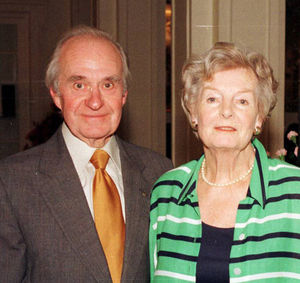
Son Mark, who lives in Horsham, Sussex, says his mother stopped working after her marriage, and his father had a successful architecture practice, with its Shrewsbury offices off Grope Lane.
He said: "She spoke a bit about wartime, mainly about Lester Sanders, much less about Ian Smith and others that had been killed. I think she mentioned a Jewish agent – not a pilot – who went to Holland and never returned.
"I don't think she was ever in uniform – she certainly never mentioned anything about that – but I think she worked in some capacity at, or near to, or associated with, RAF Tern Hill. She certainly mentioned Tern Hill several times."
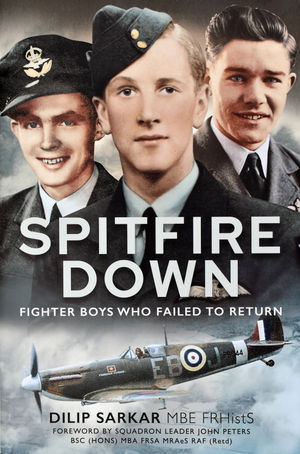
* Spitfire Down is published by Pen & Sword and costs £25.


